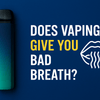How Much Nicotine Is in a Vape?

How Much Nicotine Is in a Vape?
Vaping is the act of inhaling a vapor produced by an electronic cigarette (e-cigarette) or similar device. The vapor typically contains nicotine, flavorings, and other chemicals.
The amount of nicotine in a vape can vary depending on the type of e-cigarette and the e-liquid used. E-liquids are available in a variety of nicotine strengths, from 0 mg/mL (zero nicotine) to 50 mg/mL or more.
The average nicotine content of a vape is about 12 mg/mL. However, there are many different types of vapes and e-liquids available, so the amount of nicotine in a vape can vary significantly.
How Does Nicotine Affect the Body?
Nicotine is a highly addictive substance that can have a number of effects on the body. When nicotine is inhaled, it is absorbed into the bloodstream through the lungs. The nicotine then travels to the brain, where it binds to receptors that release dopamine. Dopamine is a neurotransmitter that is responsible for feelings of pleasure and reward.
The repeated release of dopamine can lead to addiction. Nicotine can also have a number of other effects on the body, including:
- Increased heart rate
- Increased blood pressure
- Increased insulin resistance
- Reduced lung function
- Increased risk of cancer
Tips for Vaping Safely
If you do choose to vape, there are a few things you can do to reduce the risks to your health:
- Choose a device that has been tested and approved by a reputable organization.
- Use e-liquids that contain no nicotine or that contain a low level of nicotine.
- Avoid e-liquids that contain flavorings that have been linked to health problems.
- Do not vape more than you would smoke.
- Do not vape indoors or around children.
Conclusion
The amount of nicotine in a vape can vary depending on the type of e-cigarette and the e-liquid used. If you are considering vaping, it is important to be aware of the nicotine content of the e-liquid you are using. You should also be aware of the potential risks of vaping, including addiction and health problems.
I hope this blog post has been informative. If you have any further questions, please feel free to contact me.






